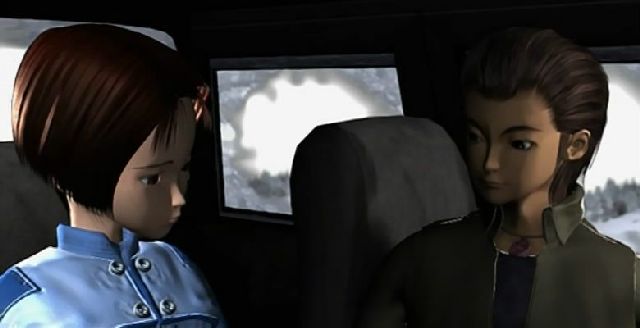A.Li.Ce (1999) 
“Her past is the future”

Director: Kenichi Maejima
Cast: Kaori Shimizu, Chihiro Suzuki, Mariko Kouda
Synopsis: When Alice Hayashi, the youngest person ever to go into space crashes her shuttle at the North Pole, she is thrown thirty years into the future.
Anime is a genre that has never particularly appealed to this reviewer. Dress them up any way you like, at the end of the day they’re just cartoons for those on the cusp of adulthood, and as such they generally have impossibly convoluted plots (which means they must be ‘deep’, right?), zero characterisation and characters with tiny noses and eyes like saucers. A.li.ce (now if that’s not a pretentious title, I don’t know what is) has the plot and the eyes and the noses, but it does at least attempt to round out some of its characters. Unfortunately, Yuan, the male lead, talks as if he finds everything impossibly exciting, and you quickly find yourself wishing he would fall foul of Nicolai’s ubiquitous Liberation Forces. Because Alice herself is a somewhat wan heroine, both she and Yuan are completely overshadowed by SS1X, the sexy female robot who undergoes three changes during the picture, all of which provoke in Yuan the kind of appreciation that indicates some rather worrying sexual leanings.
The story revolves around Alice, some kind of worldwide pop star at the turn of the century, who wins a trip on a lunar spaceship only to find herself mysteriously catapulted thirty years into the future. Landing in Lapland, she is saved from liberation forces by Yuan and SS1X, a robotic waitress, and eventually discovers that she is the mother of Nero, a global dictator who has reduced the world’s population to one billion.
The plot of A.li.ce is clearly a kind of reversal of Terminator: the mother travels to the future to sort out the world instead of having the future visit her in the present. There are also other influences here — for example, one death scene is based on the slow-motion techniques of The Matrix. But, that said, the movie does manage to retain its own character throughout. The story unfolds at a deliberate pace, each piece of information seeming to be parcelled out to the viewer at regular intervals, which means it all drags rather badly during the first act. Fortunately, there’s enough mystery and intrigue surrounding Alice’s situation to keep the viewer interested.
Human actors in motion-capture suits were used to enable the animators to create the natural movements of the characters, and at times it works quite well. At other times, though, the animation looks particularly poor, no better than that found on older PC games (many of those involved had computer game experience, apparently, which might account for these occasional lapses). There’s also the common problems with CGI animation: character’s feet are rarely shown because they appear to be hovering an inch or two above the ground; their clothes don’t move when they touch them, and contact between two characters is particularly unconvincing. Another drawback is that the true nature of most characters is immediately evident from the way they are drawn; the bad guy might as well carry a trident and have a couple of horns poking out of his forehead.
As with almost all time travel movies, A.li.ce has its share of plot holes and inconsistencies; it doesn’t really exploit all the possibilities created by the situation, but it does manage to tie the loose ends before the final credits roll. Catch it on a DVD with the Jonathan Clements commentary if you can; this guy knows what he’s talking about, and offers a load of fascinating insights into the making of this movie, and into the genre as a whole.
(Reviewed 15th January 2007)
